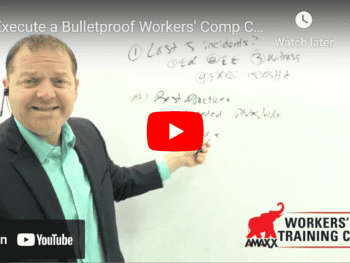
Skillman assembled diverse groups, including CEOs, attorneys, business students, and kindergartners, to observe their interactions and compare results. The study’s findings are not only surprising but also hold profound lessons about teamwork, communication, and the ingredients for a positive organizational culture. These lessons also extend to reducing workers’ compensation costs through better collaboration and proactive problem-solving.
Business Students vs. Kindergartners: A Tale of Unexpected Success
One of the most striking comparisons in the study was between business students from elite universities and kindergartners. Intuitively, one might assume that the business students, with their education and analytical skills, would excel. However, the results told a different story:
- Average height of towers built by business students: 10 inches
- Average height of towers built by kindergartners: 26 inches
The kindergartners outperformed the business students by over 2.5 times. Why? The key lies in how the groups approached the task. While business students spent significant time strategizing, dividing roles, and negotiating hierarchy, kindergartners dove straight into action, experimenting and adapting as they went. Their iterative process and willingness to collaborate without ego proved far more effective than the calculated but rigid approach of the business students.
This outcome highlights an essential principle: success in group dynamics often hinges on the ability to collaborate openly, experiment freely, and prioritize shared goals over individual roles. In the context of workers’ compensation, fostering a similar collaborative environment can lead to earlier injury reporting, effective hazard identification, and creative solutions for return-to-work programs, ultimately reducing costs.
Lessons for Organizations: Building a Positive Culture to Reduce Workers’ Comp Costs
Understanding why kindergartners succeeded offers valuable insights for organizations aiming to foster a positive and productive culture. These lessons extend to the implementation of autonomy and building safety—two critical components of a thriving workplace that directly impact workers’ compensation outcomes.
Autonomy and Building Safety: A Framework for Action
Creating an environment where employees feel safe to share ideas and take initiative requires intentional effort. Daniel Pink, in his book Drive, outlines a three-part framework to cultivate autonomy:
- Ask the Right Questions: Shift the focus from limitations (“What can’t I do?”) to opportunities (“What can I do?”). Encourage individuals to identify small, actionable steps within their sphere of influence to make a positive impact.
- Don’t Ask for Permission—Act: Empower employees to implement minor changes without waiting for management approval. Prematurely seeking permission can stifle creativity and delay progress.
- Lead with Results: Demonstrate the value of new ideas by presenting outcomes. For instance, “I noticed a recurring issue causing inefficiencies, so I made this change, and here are the results.” This approach makes it easier for management to support and scale successful initiatives.
Additional Considerations for Fostering Autonomy and Safety
- Ensure Everyone Has a Voice: Teams work more effectively when all members feel free to contribute ideas. In a workers’ compensation context, this openness encourages employees to report injuries promptly, identify hazards, and suggest transitional-duty opportunities. Early reporting and hazard mitigation are key to preventing costly claims and minimizing downtime.
- Hire the Right People: Autonomy thrives on trust. Using tools like integrity tests during hiring can help identify candidates who align with an organization’s values and are less likely to engage in counterproductive behaviors. Trustworthy employees are more likely to follow safety protocols and report injuries or hazards without fear.
- Communicate Expectations Clearly: Transparency fosters collaboration. For example, proactively involving injured workers in identifying light-duty roles signals their value to the organization and promotes faster recovery. Clear communication also reduces misunderstandings and potential disputes, lowering the likelihood of prolonged claims.
Practical Applications: Small Steps to Reduce Workers’ Comp Costs
Many organizations have successfully implemented autonomy and safety practices through small-scale pilot programs. For example, companies like Google use “20% time,” allowing employees to dedicate a portion of their workweek to self-initiated projects. This approach has led to groundbreaking innovations, such as Gmail, and demonstrates the power of empowering employees to pursue their passions.
Even minor steps can signal a shift away from micromanagement. Encouraging employees to experiment with solutions, share ideas, and collaborate can gradually transform workplace culture. For example, allowing workers to propose and test ideas for transitional-duty jobs following an injury fosters both autonomy and mastery.
In the workers’ compensation realm, these small steps can have tangible impacts:
- Earlier Injury Reporting: When employees feel safe to report injuries without fear of retribution, claims can be addressed promptly, reducing medical costs and litigation risks.
- Hazard Identification: Empowered employees are more likely to spot and address potential safety issues before they result in injuries.
- Effective Return-to-Work Programs: Collaboration between employees and management to create meaningful transitional-duty roles can expedite recovery and minimize lost productivity.
Building a Collaborative Future
The Spaghetti Tower Study underscores the value of collaboration, experimentation, and an ego-free approach to problem-solving. Kindergartners succeeded not because they were more knowledgeable but because they instinctively prioritized teamwork and adaptability. Organizations can learn from this by fostering a culture that values safety, autonomy, and open communication.
By taking small, actionable steps—from empowering employees to lead with results to ensuring everyone’s voice is heard—companies can create an environment where innovation and collaboration thrive. The result? A stronger, more resilient culture where both individuals and teams reach new heights—much like the kindergartners’ spaghetti towers. And in the context of workers’ compensation, these cultural improvements translate into reduced costs, healthier employees, and a safer workplace.

Contact: mstack@reduceyourworkerscomp.com.
Workers’ Comp Roundup Blog: http://blog.reduceyourworkerscomp.com/
Injury Management Results (IMR) Software: https://imrsoftware.com/
©2024 Amaxx LLC. All rights reserved under International Copyright Law.
Do not use this information without independent verification. All state laws vary. You should consult with your insurance broker, attorney, or qualified professional.















